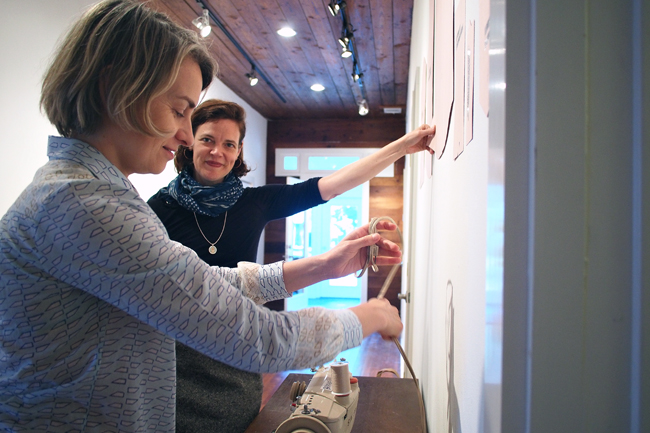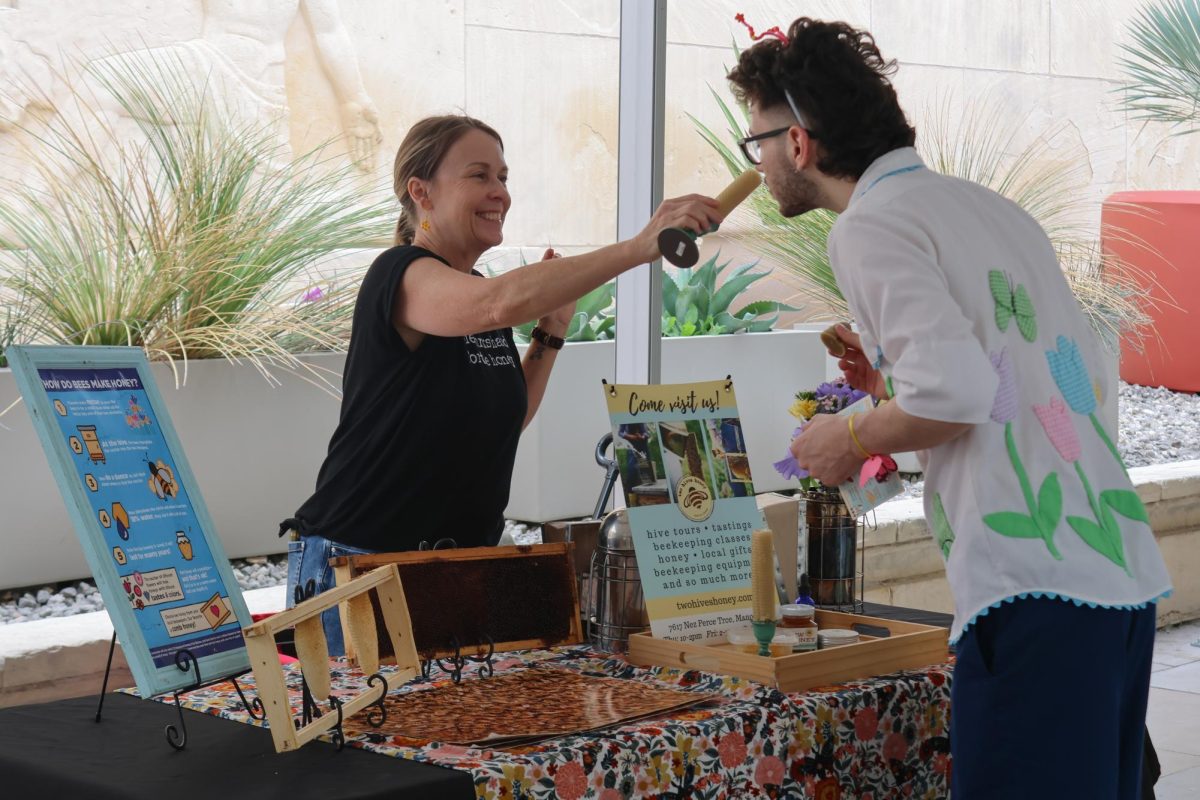While brainstorming for their next interactive art project, textile artists Rebecca Layton and Monika Jakubiak knew they wanted to create a space for discussion about where mass-produced clothes really come from: sweatshops.
Their installation, “Sewn on the Street,” is a single-day pop-up sweatshop and part of the Fusebox 2014 Machine Shop Series. This series is a platform for artists and audiences that encourages experimentation and discussion in the arts. Sewn on the Street will be on display at City Hall on Thursday from 11 a.m. to 2 p.m.
The artists said they will enlist people passing by to help create part of a T-shirt on one of their 10 sewing machines, which will be housed underneath a tent.
“If we can get them to sit down and spend time at the sewing machine, we can pay them a rate that a sweatshop worker would make, which is probably pennies,” Layton said. “That’s mostly as a symbolic thing, to get the connection that these are the clothes we wear every day, who’s making them and what are they getting paid for.”
The walls of the tent will be lined with lists of sweatshop workers’ wages from different countries around the world, such as Honduras and India.
Layton explained, while sweatshops vary from region to region, a common practice is the creation of “fast clothing,” or clothing that is cheap and easy to make, but not necessarily of the best quality.
“[Fast clothing is] very much parallel with fast food,” Layton said. “When you think about how fast food is made, it’s made with the cheapest ingredients, and it actually takes less time to prepare. It often has the trifecta of fat, sugar and salt. So you can say that fast clothes were probably made with the cheapest actual material.”
The production of fast clothing in sweatshops has become more common as the demand for newer styles has increased in trendy fashion stores, such as H&M, explained Layton. She said, today, high-quality clothing has deteriorated so significantly that “fast fashion” is now the standard.
Both Layton and Jakubiak said that the purpose behind Sewn on the Street is to raise awareness of where most clothing comes from — not to take a political stance.
“It’s not activism,” Jakubiak said. “Rather, it’s an artistic project. It’s a performance where members of the public can try to stitch something together.”
On Saturday, Fusebox will be hosting a discussion with the Sewn on the Street artists called the Noontime Waffle Chat. The chat, which offers complimentary waffles, will cover topics ranging from how clothes are made and distributed to the potential implementation of a “slow clothes” movement.
Ann Beeson, founder of Hatch, an organization co-presenting the chat, will be facilitating the Noontime Waffle Chat discussion.
“It’s a fun and creative kind of element,” Beeson said. “The whole idea is to get people involved in conversation. They’re going to be on picnic blankets in the sculpture garden, and it’s a different kind format than the usual conversation.”
Jakubiak hopes that having participants create T-shirts from scratch will provide some insight into the amount of effort that goes into producing, for example, a single T-shirt.
“I realized that the craft, the tools and technologies of fashion and clothes-making is very simple and very modest,” Jakuibiak said. “It’s universal and around the world, no matter where I go.”





















